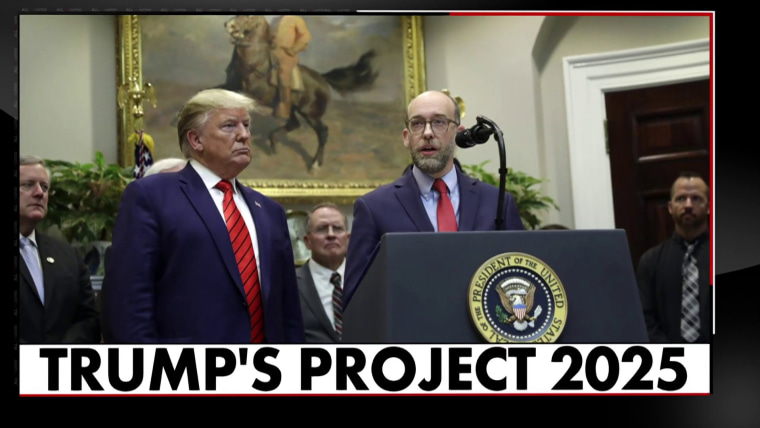While Tesla CEO Elon Musk’s relationship with President Donald Trump has collapsed more rapidly than expected in recent weeks, any rumors of the so-called Department of Government Efficiency’s ending along with the Trump-Musk alliance are greatly exaggerated. Even without the world’s least charismatic oligarch at its head, the DOGE apparatus remains in place. And thanks to its distinct lack of legal authorities or oversight, the likeliest person to control DOGE will control the destructive power to further shatter the federal government’s very foundations.
The executive order establishing DOGE actually set up two groups with almost the same name. It transformed the former U.S. Digital Service inside the White House into the United States DOGE Service. It also set up “the U.S. DOGE Service Temporary Organization” within that office, with a mission of “advancing the President’s 18-month DOGE agenda.” The latter is due to expire on July 4, 2026, but the DOGE office remains — and as Wired recently reported, inside the administration the two “are basically the same thing now.”
That confusing setup is par for the course for DOGE since its inception.
That confusing setup is par for the course for DOGE since its inception. It took more than a month for the White House to answer the simple question of who is serving as the USDS administrator, the de jure leader of the DOGE project. The administration eventually offered a name — Amy Gleason — but it’s still not clear how much influence she has ever had over the DOGE team members dispersed throughout the federal government.
The extent of Musk’s influence isn’t even clear, in fact, even though the group was his brainchild. The group’s tactics often reflected Musk’s chaotic leadership style, with the infamous “fork in the road” email to federal staffers echoing a similar email Musk sent to Twitter employees. DOGE’s employee list includes a number of former SpaceX, Tesla and X employees, and it has taken a software coding-heavy focus in hiring staffers. But it’s harder to see how his absence will affect the long-term strategy behind creating DOGE in the first place.

On the one hand, Musk’s departure is a definite blow to DOGE’s status within the Trump administration. According to ABC News, some DOGE employees who were left behind worry that they’ll become collateral damage in the feud between the president and their former boss. The Washington Post reported that several major Musk allies have already been pushed out of their gigs in agencies like the Federal Aviation Administration. And even before Musk’s rift with Trump, Cabinet members and other officials had been busy reclaiming their power over hiring practices from DOGE appointees.
That having been said, “DOGE still maintains a strong presence at the agencies that oversee federal spending, real estate and logistics,” according to the Post. “Its initial areas of focus included the Treasury Department, the Office of Personnel Management and the General Services Administration, where key allies are still guiding technology modernization efforts.” Wired reported that several of Musk’s key lieutenants have transitioned from special government employees to full-time job-holders within the GSA.
Wired has also reported that DOGE is on something of a hiring spree for tech workers. That drive is particularly significant given the project’s access to (typically siloed) government databases full of Americans’ personal information, like that held at the Social Security Administration. The push to automate as many governmental functions as possible fits hand in glove with the goal of reducing the federal workforce, even though some of the artificial intelligence tools deployed so far have been full of errors.
Trump’s budget chief has been a vocal advocate for slashing the federal government, having reportedly helped shape Musk’s thinking about DOGE after last year’s election.
DOGE’s likely continued existence can also be seen in the White House’s most recent budget request to Congress, which calls for more than doubling the operation’s total price tag to $45 million next year. The budget request is key because of who drafted it: Office of Management and Budget Director Russell Vought. Trump’s budget chief has been a vocal advocate for slashing the federal government, having reportedly helped shape Musk’s thinking about DOGE after last year’s election.
Vought also was most likely the architect of many of DOGE’s most severe staffing cuts, and he has long argued that the president can make such cuts on his own without Congress. As Politico recently quoted a senior government employee saying: “It wasn’t actually Musk holding a chainsaw. Musk was a chainsaw in Russ Vought’s hands.” And the OMB director recently told lawmakers that he foresees DOGE team members embedded across the government acting “almost as in-house consultants as a part of the agency’s leadership.”
With Vought steering things behind the scenes, DOGE will remain a potent tool for the White House to continue keeping a close eye on the various department and agencies, further consolidating executive authority. Moreover, unlike Musk, Vought has decades of experience of getting things done in the federal bureaucracy. He knows the weak points to attack and has the patience to see this project through to its end. Unfortunately, the likeliest outcome of this crusade is also the most ironic: the end of any guardrails against the federal government’s toppling into the very inefficiency that DOGE was charged with eliminating.

